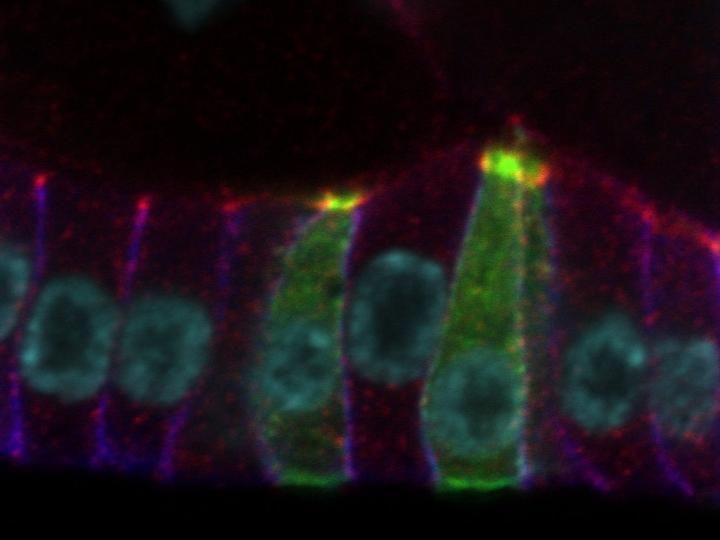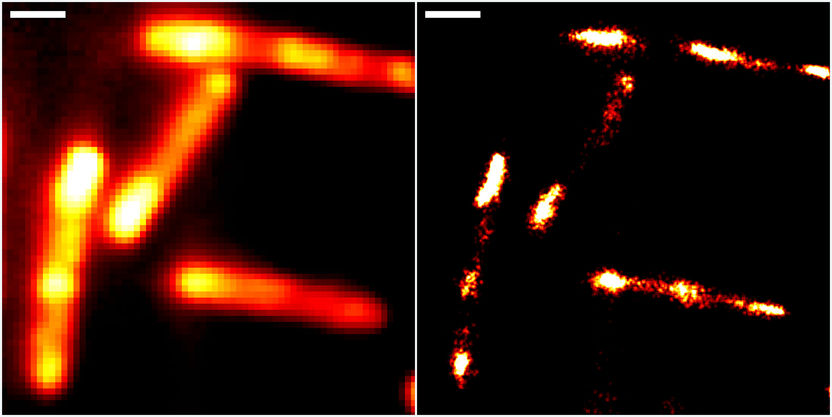Alzheimer risk impairs “satnav” function of the brain
Altered activation pattern in entorhinal cortex in young risk carriers
Young adults with genetically increased Alzheimer’s risk have altered activation patterns in a brain region that is crucial for spatial navigation. This is reported by the team headed by Prof Nikolai Axmacher from the Ruhr-Universität Bochum, together with colleagues from the universities of Bonn, Nijmegen and Ulm in the journal Science.
Entorhinal cortex affected by Alzheimer's disease at an early stage
Alzheimer's patients suffer from severe memory loss and disorientation. One of the areas affected by the disease at an early stage is a brain region that is crucial for navigation. This brain area, the so-called entorhinal cortex, contains cells that fire in a spatial grid pattern, the grid cells. That was shown in animal studies. In 2010, Christian Doeller, presently at Radboud University in Nijmegen, demonstrated that the grid cell system in humans can be recorded indirectly using functional magnetic resonance imaging when the test subjects navigate in a virtual environment.
Grid pattern in entorhinal cortex altered in risk carriers
Nikolai Axmacher, together with his graduate student Lukas Kunz, Christian Doeller and other colleagues from Bonn, Nijmegen und Ulm, applied that method. The team analysed the grid cell system in the entorhinal cortex of young students with and without Alzheimer's risk genes. “The risk carriers showed a less stable grid pattern in the entorhinal cortex – many decades before they might develop Alzheimer's dementia,” says Lukas Kunz, who conducted the experiment at the German Center for Neurodegenerative Diseases in Bonn. Moreover, risk carriers moved less frequently in the centre of the virtual landscape, which indicates an altered navigation strategy. In the risk group, the brain activity in the memory system was generally increased. That might be short-term compensation of the reduced grid pattern, but it may also contribute to the development of Alzheimer's dementia in the long term, according to the researchers.
APOE gene is a risk factor
At present, there is no curative treatment for Alzheimer's dementia. A potential reason is that drugs are only administered after large parts of the brain have been destroyed. Therefore, current research aims to identify Alzheimer's dementia early on and to yield a better understanding of early disease stages. The APOE gene appears to play an important role in the development of the disease. One in six people present a risk variant and, accordingly, have a three times higher risk of developing Alzheimer's disease. Examining young adults with the risk version of APOE may thus yield potential insights into very early stages of the disease.
Better understanding of early changes in Alzheimer's dementia
“Our studies may contribute to a better understanding of early changes of Alzheimer's dementia,” says Axmacher. “Now, it has to be verified if such changes also occur in older people at an early stage of Alzheimer's dementia and if they can be affected by the application of drugs.”
Original publication
Kunz et al.; "Reduced grid-cell-like representations in adults at genetic risk for Alzheimer’s Disease"; Science 2015
Most read news
Original publication
Kunz et al.; "Reduced grid-cell-like representations in adults at genetic risk for Alzheimer’s Disease"; Science 2015
Topics
Organizations
Other news from the department science

Get the life science industry in your inbox
By submitting this form you agree that LUMITOS AG will send you the newsletter(s) selected above by email. Your data will not be passed on to third parties. Your data will be stored and processed in accordance with our data protection regulations. LUMITOS may contact you by email for the purpose of advertising or market and opinion surveys. You can revoke your consent at any time without giving reasons to LUMITOS AG, Ernst-Augustin-Str. 2, 12489 Berlin, Germany or by e-mail at revoke@lumitos.com with effect for the future. In addition, each email contains a link to unsubscribe from the corresponding newsletter.
Most read news
More news from our other portals
Last viewed contents
Heartworm
Collagen
Sleep_apnea

How cells change their shape - Function of protein 'smallish' unraveled
Midgetville
Microorganism



















































